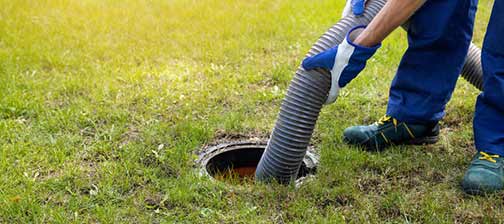Acquiring the Importance of Septic Tank Maintenance
Septic tanks are simple components of most residents waste treatment systems, especially in rural, suburban, or less-developed towns where municipal sewage plants do not exist or are not feasible. These below-ground treatment systems are used to treat household wastewater effectively and safely, which is water used at sinks, showers, toilets, and washing machines. The process consists of the segregation of liquids from solids, with the solids settling at the bottom of the tank to form sludge, and the lighter scum floating on the surface. The treated liquid, or effluent, then runs off into a leach field or drain field, where it percolates into the ground, and the treatment cycle is complete.
Proper maintenance of septic tanks is crucial since it has immediate implications on the performance of the system, prevention of costly repairs, and environmental protection as well as public health. Knowing the signs that your septic tank is full or has partially failed is part of being a good homeowner. This allows homeowners to address issues before they become major, expensive repairs, or health hazards. Systematic inspections, early pumping, and wise household habits form the core of proper septic system maintenance, which promises longevity and optimum performance of the important infrastructure.
Common Signs That Your Septic Tank May Be Full
Knowing the signs to show that your septic tank is full or near capacity is important to guaranteeing that you have a healthy and well-functioning system. The signs come in very mild forms at first but intensify as the problem advances. Early detection of the signs can save you from having to repair costly issues, environmental contamination, or health complications. Routine observation and inspection can place you ahead of the game when it comes to septic system failure, ensuring your residence remains safe and your property intact.
It should be noted that the symptoms of a full septic tank are not always obvious and at times may be mistaken for minor plumbing issues. Therefore, being aware of these symptoms will help you differentiate normal operation of the pipes from overloading of the septic system symptoms. Below are some of the most common and most revealing signs that your septic tank is full, and they empower homeowners with the knowledge to act quickly and in the appropriate way.
Unpleasant Odors on Your Property
An obvious but very discomforting sign that your septic tank may be full is the appearance of obnoxious odors on your property, especially near access points to the septic tank or drain field. These odors usually occur from the gases like hydrogen sulfide and methane, which escape from the tank when it is overloaded or when there are cracks into the tank caused by overloading with solid wastes. After the septic tank is full, it cannot contain the waste any longer, and these odious and potentially harmful gases find their way into the environment.
If you have a persistent odor of sewage, rotten eggs, or sulfur-like smell, it is a clear indicator that your septic system needs an immediate inspection and treatment. Not doing this might lead to more severe consequences, including harm to the health of occupants and neighbors, and environmental contamination. Ventilation, pumping, and routine maintenance need to be performed to prevent these odors from becoming a health hazard and to get your property to smell fresh and clean.

Slow Drains and Backups in Your Plumbing System
Sluggish operation of plumbing fixtures in your home is another common and unequivocal sign that your septic tank is full. When the tank is full or overflowing, it cannot process waste properly as it comes into the tank, forming a backlog that manifests itself as slow-draining sinks, bathtubs, and showers. Toilets may be slower to flush or may even back up, overflowing with waste. Moreover, you might find water pooling in your home’s sinks or bathtubs, or sewage flowing into your household plumbing equipment. These are often caused by the inability of the tank to hold more waste, resulting in clogs and blockages in the system.
Regular clogs in your plumbing must never go unnoticed, as they are certain to show that your septic system must be addressed immediately. Left alone, these problems will lead to serious damage to your plumbing system, present health hazards, and cost a fortune in repairs. Regular inspection and pumping can prevent these problems from getting out of hand, and ensure your plumbing runs smoothly and in proper condition.
Pooling Water or Wet Spots in the Drain Field
Seeing pools of water, soft spots, or abnormally grassy, green grass over your drain field is a critical indication that your septic tank is full or the drain field is overloaded. When the septic tank gets too full, water can seep into the drain field and cause the soil to become waterlogged and permit surface pooling. This not only indicates system malfunction but also poses environmental risk, since untreated effluent can contaminate neighboring soil and groundwater sources.
Excessive puddling or extremely dense vegetation over the drain field area is a sign of the system failing to treat waste effectively, posing environmental danger and costly repair work. If you notice these symptoms, it is essential to have your septic system serviced and inspected as soon as possible to prevent additional damage and pollution to the environment. Maintenance like pumping and preventing it from being overwhelmed with water can halt the clogging of the drain field and keep your septic system from getting ill in the long term.
Unusual Vegetation Growth Over the Septic Area
While healthy, green lawn might signal sound soil condition, exceptionally thick or fast plant growth on top of the septic tank or drain field could be a sign of excess nutrients from leaking effluent. Effluent flow in excess or leaks in and around the septic tank result in effluent seeping into the ground, providing additional nutrients that facilitate fast and abnormal plant growth. This thick vegetation will look beneficial in a surface glance, yet it is a warning that your septic system is faulty.
Excessive nutrient load can mean overflows or leaks, leading to environmental contamination and your property landscape being destroyed. Be careful, homeowners, and pay attention to unusual vegetative growth trends above the septic zone, scheduling inspections where necessary. Proper maintenance, intelligent water usage, and regular pumping will prevent nutrient overloads and your septic system’s integrity.
Gurgling Noises in Plumbing Fixtures
Gurgling noise on flush toilets or sucking water is readily overlooked but serious signs of septic system malfunctioning. Gurgling noise typically arises when air becomes trapped in the pipes due to a plugged or non-working septic tank. The air that is trapped inside creates pressure imbalances, which lead to the creation of gurgling noises upon using the plumbing fixtures in a normal manner. If you keep experiencing these noises over and over, it means your septic system is not efficiently able to dispose of waste, and immediate inspection is necessary.
Ignoring these noises can lead to severe problems such as broken pipes, clogging, or system failure. Fixing the problem in its initial stage by consulting a professional can prevent costly repairs and maintain your plumbing system in a working and quiet condition.

Increased Water Bills and Unexpected Expenses
A common indicator of a full septic tank that many people ignore is a significant rise in your regular water bills. When the septic system is clogged, waste and water might not drain correctly, and as a result, your household could end up using more water to get daily tasks done. For instance, slow drains in sinks or toilets can leave you running water longer or in a cycle, hence higher consumption overall. Over time, this inefficiency will significantly drive up the cost of utilities and present unexpected costs for repair or system replacement.
Paying attention to your water usage and looking out for dramatic spikes can warn you of septic system issues before they arise. Routine maintenance and inspection are the most important steps to prevent these secret costs, keeping your system running efficiently and saving you money in the long run.
What You Should Do When Signs Appear
If you notice any of the signs that your septic tank may be full, you should take action immediately to prevent further damage and maintain your property and health in safety. The first thing is to call a licensed septic service to make a proper inspection. These experts can properly identify the issue, check if the tank has enough water, and detect leaks or clogs. On-time pumping and fixing are necessary to bring the system back to its proper working condition. DIY repairs and excessive use of chemicals should be avoided by homeowners, as wrong handling will only complicate the issue.
Scheduling periodic inspections—preferably every three to five years—will enable early detection of potential problems prior to severe instances. Mindful home water consumption, non-flushing of non-biodegradable items, and routine upkeep can also extend its lifespan and prevent future complications. Prompt professional intervention ensures longevity of your septic system and the wholesomeness of your home environment.
Simple Steps to Maintain Your Septic System and Prevent Overfilling
Prevention is always better and less expensive than fixing. There are a few simple but effective steps that homeowners can take to maintain their septic systems and prevent overloading. Regular inspection and pumping of the septic tank, ideally every three to five years depending on family size and use, is necessary. Avoid what goes down the system; avoid flushing non-biodegradable refuse, grease, chemicals, or excessive amounts of water to overload the tank.
Installing low-flow showerheads and toilets can also reduce water consumption and lower the burden on the septic system greatly. Spread-out use of water during the day, as compared to simultaneous use of several fixtures, avoids shock surges of waste into the tank. Educating family members on how to responsibly use water and get rid of waste is equally important. These preventive actions assist in prolonging the life of your septic system, cut down on maintenance expenses, and ensure a healthier surrounding for your home.
When to Call a Professional for Septic Tank Issues
Although some septic tank problems may be resolved by one’s self, most necessitate the services of licensed experts. Persistent odors, backups, pooling water, or any sudden change in the system’s performance is clear evidence that a professional needs to be called in. Early meeting with a licensed septic service company ensures a successful inspection and correct diagnosis. These professionals can perform necessary pumping, identify leaks or blockages, and carry out repairs beyond the expertise of simple DIY tasks.
Regular professional checkups, ideally every three to five years, are a wise long-term investment in your septic system’s health. They identify any impending problems early, prevent costly repairs, and maintain the system operating efficiently and safely. Having difficult problems tackled by experienced pros guarantees peace of mind and continued safety for your home and environment.
Environmental and Health Effects of a Full Septic Tank
Negligence in observing the signs of a full septic tank will have negative environmental and health effects. Full tanks can leak untreated sewage onto the ground, contaminating groundwater and other bodies of water. This contamination can pose real health hazards to homeowners, pets, and wildlife, such as waterborne diseases and other health issues. Also, untreated sewage can cause environmental degradation, adversely affecting local ecosystems and contaminating water sources for consumption. Environmental remediation and medical expenses could be substantial.
Consistent upkeep, consistent pumping, and good household habits can prevent these adverse effects. Preserving the well-being of your neighborhood and natural resources requires vigilance, proactive regulation, and adherence to best practices in septic system maintenance. Getting your septic tank to function properly protects not only your house but also serves the greater goal of environmental conservation and public health security.
Conclusion: Active Maintenance for a Healthy Septic System
A septic system can be maintained apparently dauntingly initially, but understanding the bigger signs of a full tank and the proper procedure to undertake makes the task feasible and simple. Regular inspections, prompt response when issues arise, and proper housekeeping practice are the secrets to making your septic system operate well and reliably for a very long time.
Care and preventive maintenance save you repair money, your health, and the environment. Remember that a well-pumped septic system is not just a luxury but a key part of your home’s infrastructure requiring regular maintenance and attention. By being educated and committed to proper septic system care, homeowners can enjoy the peace of mind, environmental stewardship, and comfort of a safe, healthy home environment for themselves and future generations.


